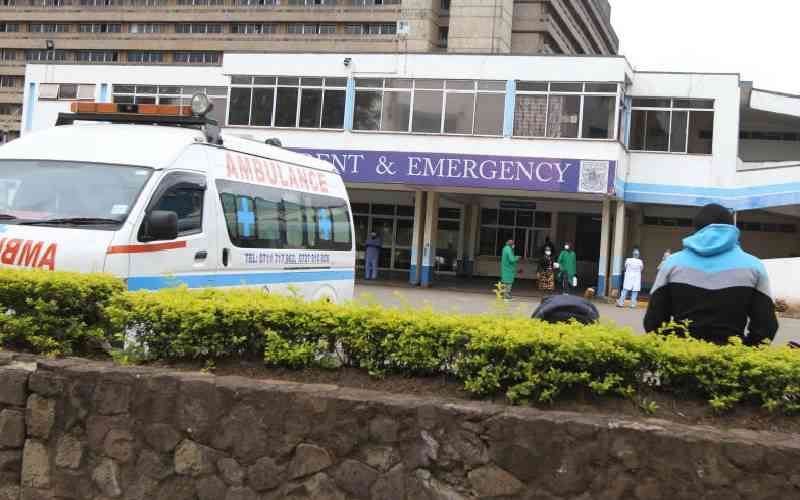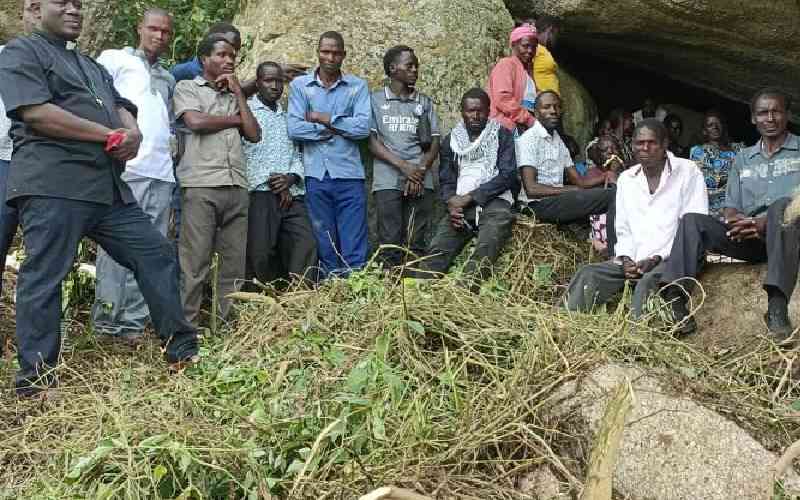This week, I visited Lamu Island for the first time and what I saw was breathtaking natural beauty. The deep blue Indian Ocean and old Arabian and Portuguese architecture blends with the easygoing, laid-back nature of its people.
It is an experience to behold. The speed boats taking visitors from Manda Airport rekindle the memories of how Arab and Portuguese explorers felt five centuries ago when they set foot on the East Coast of Africa.
Yet Lamu looks like an abandoned piece of jewel. According to the 2009 population census, Lamu has less than 140,000 people. But once you land there, one gets the feeling that there are more than 1 million souls on the island. The hustle and bustle there makes life there very exciting, but that is beside the point.
Other than the county government that is doing a good job, there are no other development partners. The only two agencies present in the area are the Kenya Red Cross that operates an emergency speed boat as an ambulance in case of emergencies and the World Vision which has a few projects. Other than that, there are no other local or international NGOs in the area.
Widespread poverty
The irony is that most of the people of Lamu are poor amid plenty. Throw a net into the ocean and it catches plenty of fish. Put up a tent, and you will surely find visitors to lodge. Sadly, because of the high unemployment rate, most of the young have become susceptible to drug abuse and other vices. Moreover, the allure of terror groups promising instant gratification is always lurking.
There are reports that a large population of the young are hooked on hard drugs like cocaine and heroin or marijuana and miraa (khat).
In the evenings it is not uncommon to see young women and men out in the night soliciting for cash for sex. Lamu has one of the highest HIV rates in the country. The risk of contracting other communicable diseases is also very high.
But as I said, Lamu is full of opportunities, most of it, regrettably unexploited. The ocean provides sustainable livelihood through fishing and the covetous beaches and shoreline. What is needed is value addition.
If the fish were to be packaged for export to other parts of the country, there would be no need to import fish from China as we discovered recently. In a nutshell, Lamu can offer our hospitality industry some of the best quality seafood given its unpolluted coastline.
Yet the elephant in the room is the treatment of Lamu. Perhaps, a good-for-nothing outpost. In terms of the national shareable revenue, Lamu receives the lowest amount compared to the other counties from the Exchequer. This partly has to do with the parameters used by the Commission on Revenue Allocation that uses population, land mass and poverty index to determine how much of the shareable revenue a county ought to get.
Concentration
On the land mass, the CRA concentrated on the actual land mass where people live, forgetting that the county encompasses both land and waters between the islands where in some cases, people have even put businesses on top of waters. If all this area had been taken into account, Lamu would have been eligible for more funds from the National Treasury.
The most striking thing is that the poverty index for Lamu is 34 per cent (the rest of the country is above 40 per cent), making it one of the wealthiest counties in the country. Yet it is because the locals dislike to show their poverty. When a survey was carried out, most of them gave high indices for the indicators, making it appear like they are better off. The truth of the matter is that most residents of Lamu are poor and need urgent development interventions. The infrastructure is poor and most areas are accessible only by rudimentary means of transport like the donkey.
With support, Lamu’s huge potential can be tapped for good use. The enthusiasm and energy by those I met was overwhelming. They know where they want to go, they just need someone to hold their hands. Of particular concern is the tourism industry that remains untapped.
Stay informed. Subscribe to our newsletter
And nature keeps throwing goodies at Lamu. For example, the discovery of natural gas and the development of the LAPSETT project will no doubt transform Lamu from a backwoods county under the constant threat from Al Shabaab to one of the most prosperous counties in the country.
Mr Guleid is a Consultant in [email protected]
 The Standard Group Plc is a
multi-media organization with investments in media platforms spanning newspaper
print operations, television, radio broadcasting, digital and online services. The
Standard Group is recognized as a leading multi-media house in Kenya with a key
influence in matters of national and international interest.
The Standard Group Plc is a
multi-media organization with investments in media platforms spanning newspaper
print operations, television, radio broadcasting, digital and online services. The
Standard Group is recognized as a leading multi-media house in Kenya with a key
influence in matters of national and international interest.
 The Standard Group Plc is a
multi-media organization with investments in media platforms spanning newspaper
print operations, television, radio broadcasting, digital and online services. The
Standard Group is recognized as a leading multi-media house in Kenya with a key
influence in matters of national and international interest.
The Standard Group Plc is a
multi-media organization with investments in media platforms spanning newspaper
print operations, television, radio broadcasting, digital and online services. The
Standard Group is recognized as a leading multi-media house in Kenya with a key
influence in matters of national and international interest.









